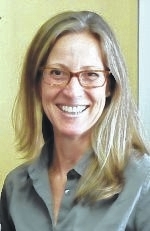What determines your landscape plant choices? Are you a flower person, or do you seek out plants with a lovely scent? Do you collect unusual plants, or just want something in your yard you “can’t kill?”
Recently I was fortunate to hear a talk by Dr. Doug Tallamy, professor of the Department of Entomology and Wildlife Ecology at the University of Delaware. Dr. Tallamy’s research focuses on understanding insect and plant interactions and, specifically, how those interactions impact the diversity of animal communities. That may sound a little dry as a subject for a talk, but in fact, it was inspiring.
His message: Plant native plants in your yard — the world depends on it.
That may sound a little dramatic, but consider the following: nature is a web of mutually evolved organisms, each one depending on the existence of the other to survive. Dr. Tallamy discussed — with an accompaniment of photographs, charts, and graphs — his research on the native birds, insects, and plants in his region (the Northeast).
He and his research assistants counted the number of insects — caterpillars were of primary interest — living and feeding on native trees and shrubs, then compared them to insects on non-native landscape plants. Research shows that native plants have four times as many insects eating on them as non-native plants. Well, that’s a good thing, you might say! Fewer pest problems, right?
Here’s where the importance of mutuality and the food web comes into play. For caterpillars specifically, native plants had 35 times more caterpillars than non-native plants. Not only do we want caterpillars so that we may then enjoy beautiful butterflies and moths, caterpillars are necessary food for baby birds. They are very high in protein, and research has calculated that one nest of baby birds requires hundreds of caterpillars, delivered by diligent parents, for the babies to reach maturity. How many of us enjoy watching birds in our yards, even going to the effort and sometimes considerable expense to set up feeders? If we are relying primarily on non-native plants to landscape our yards, we’re doing more harm to our feathered friends than we can make up for with bird feeders. One of Dr. Tallamy’s slides showed a nest of baby chickadees which had starved to death. Scattered at the bottom of the nest were black oil sunflower seeds. The desperate parents were trying to feed the babies what they themselves could eat, but which the baby birds were not able to consume. Heartbreaking.
While Dr. Tallamy was presenting primarily his own research, he discussed the extensive research of others that all point to the same conclusion: human impact on the landscape is destroying nature, resulting in population losses and even extinctions of plants and animals. Not in some far off part of the world, but right here in this country. As Dr. Tallamy presents it, the humble home landscape really is the last option for the survival of many species of plants and animals.
As individuals, we have many choices: do we need to use pesticides to keep the leaf-cutter bee from making holes in the leaves of our roses? Can we add some native trees, shrubs, and herbaceous plants to our landscapes to support nature’s diverse web of life? Resources abound: N.C. Native Plant Society (www.ncwildflower.org); NCSU’s webpage “Going Native: Urban Landscaping for Wildlife” (https://ncsu.edu/goingnative); and N.C. Audubon (nc.audubon.org) to name just a few. Finding plants can be a little challenging, but many natives are common in the landscape trade, if you know what you’re looking for.
As I take stock of my own yard, with a few camellias, crape myrtles, and other plants chosen for their flower or form (and non-native), I feel guilty that I haven’t prioritized more the planting of native plants (though I do have a number of them).
But Dr. Tallamy doesn’t want you to feel guilty, or feel like non-native plants are completely forbidden. He is hoping that more homeowners will consider the fact that their yards are more than just their own private oasis; they are part of a larger ecosystem on which innumerable species depend. So keep your beloved camellias, or cultivate your roses. Just be sure to leave plenty of room for the native trees, shrubs and flowers that support the insect and animal diversity of our natural world. Their lives depend on it.
Paige Burns is assistant horticulture agent at the N.C. Cooperative Extension’s Richmond County office.

